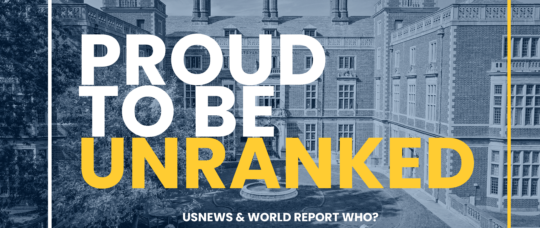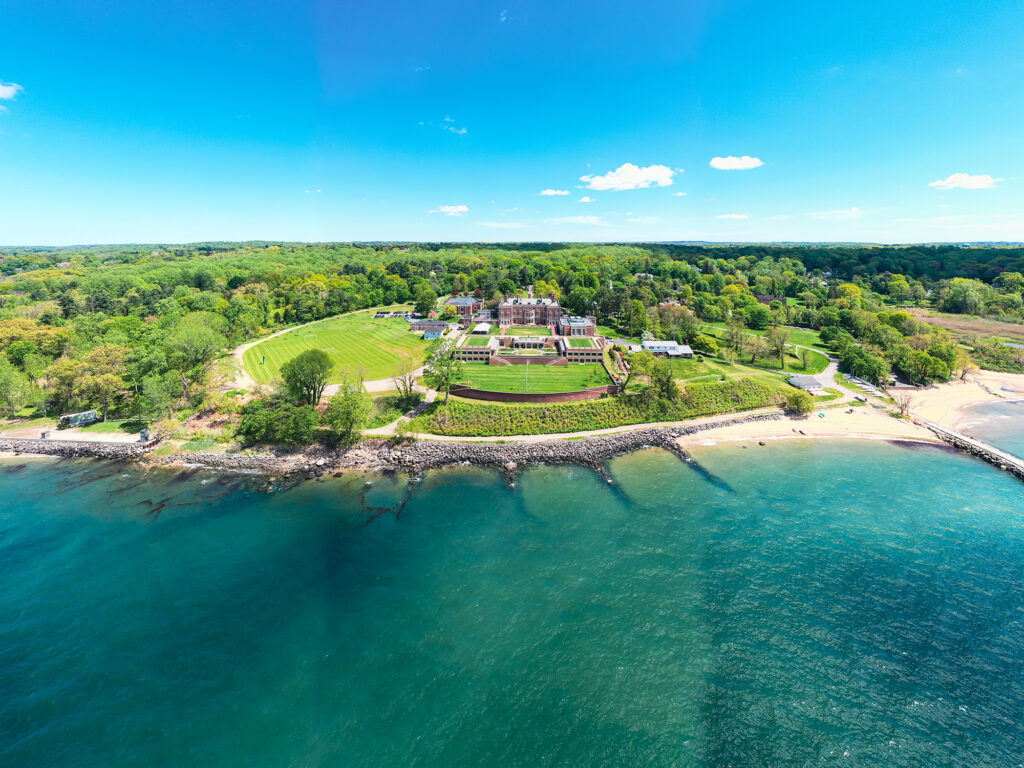By Lauren Carballo
Director of Admissions and Student Affairs at Webb Institute
In September, U.S. News and World Report released their 38th annual ranking of colleges and universities…and once again, Webb Institute, the college for which I serve as Director of Admissions and Student Affairs, was labeled “unranked” in all but one category. As we’ve always known, a “tuition-free” undergraduate college with one unique degree and a student body size of just over 100 was never meant to fit neatly into any category. If that weren’t enough, per U.S. News’ ranking criteria, it was simply our specialized program and student body size that automatically relegated Webb to this status.
We are not alone. In total, 131 (or 8%) of the 1,631 schools considered by U.S. News are also labeled “unranked” in most categories. They include schools like Olin College of Engineering, Babson College, The Juilliard School, and the Culinary Institute of America–all incredible institutions, all unique, and all unable to participate in the full U.S. News “game” because of the nature of their academic programs.
For some categories, I suppose this makes sense. How would you holistically compare any of the schools above with Williams or Harvard, which more easily fit the mold of a “typical” college? However, for other categories—categories that focus on specific data that make comparing even the most unique schools possible, U.S. News still leaves the 8% off these lists. Princeton, for example, tops their “Colleges Where the Most Alumni Donate” list with a 55% annual alumni giving rate, even though Webb’s annual alumni giving rate is over 70%. Under “Best Value Schools,” Webb is also excluded even though Webb provides full-tuition scholarships to all of its students, has one of the lowest student debt averages, has a 100% job placement rate, and has one of the highest early career salary figures in the country. Other lists like the “Top 100-Lowest Acceptance Rates” or “Most Students Receiving Merit Aid” are others on which Webb should be included, but is not. Similarly, a number of the other 131 unranked colleges would also rank well on many of these lists.
Now U.S. News does have a few categories, or “specialty lists,” in which these unique institutions are ranked, yet their methodology still finds a way to penalize the unique and less well-known. In the Best Undergraduate Engineering Program category, for example, instead of the “17 indicators of academic quality” used in US News’ main rankings, which provides at least one multi-faceted means of comparison, this specialty list uses just one–“academic reputation,” determined not by job placement rate, starting salary, internship program, industry feedback, or student feedback, but instead by the perception of the program by other college administrators—an old fashioned popularity contest. So if you compare Webb’s one degree in Naval Architecture and Marine Engineering to larger engineering programs with more degrees within better-known institutions from the perspective of other college administrators, it’s no surprise that Webb can’t compete.
…And U.S. News is not the only ranking agency that strategically limits unique schools. In 2014, Webb was ranked #2 in Money Magazine’s Best Colleges for Your Money, beating out MIT, Princeton, Stanford, and Harvard. However, shortly after, Money Magazine decided to change their ranking criteria so that only colleges with student populations of over 500 would be included, thus removing Webb from the list entirely. We have not been included in their rankings since.
I believe that Webb’s statistics speak for themselves as with many of the other unranked colleges, and there is no doubt that the unranked deserve a place on many of these lists—often at the top. So why, then, are great schools so often omitted from these lists based on seemingly random limiting factors, e.g., student body size, created by ranking agencies? Good question. Would not having an Ivy at the top of their lists threaten their credibility in the eyes of their readers? Or are they, perhaps, concerned that the colleges that support these rankings by filling out surveys or purchasing advertisements will stop doing so if the historically better-known institutions do not continue to be represented at the tops of the lists? Could a tiny, 100-person college truly pose a risk to these ranking agencies? Whatever the reason, their readership continues to grow, and prospective students continue to be guided by these lists regardless of how incomplete they are.
Up until recently, the release of each ranking list and the designation of “unranked” would immediately trigger disappointment and frustration. Yet, perhaps we at Webb have been looking at this “unranked” category the wrong way. Colleges are always looking for ways to boast how unique they are…and yet, the “unranked” are oftentimes unranked because they truly are unique. For Webb, this uniqueness is what has led us to outperform our peer institutions across many of the ranking categories. So instead of staying hidden within the “unranked” designation that ranking agencies give us this year, we are going to wear the “unranked” badge proudly and redefine what a “best college” is. Webb is proud to be unranked. And for all of the students, parents, and college counselors out there, we encourage you to take the time to look into the rest of the 8%; there may be an exceptional and “unranked” institution hiding in plain sight just for you!



